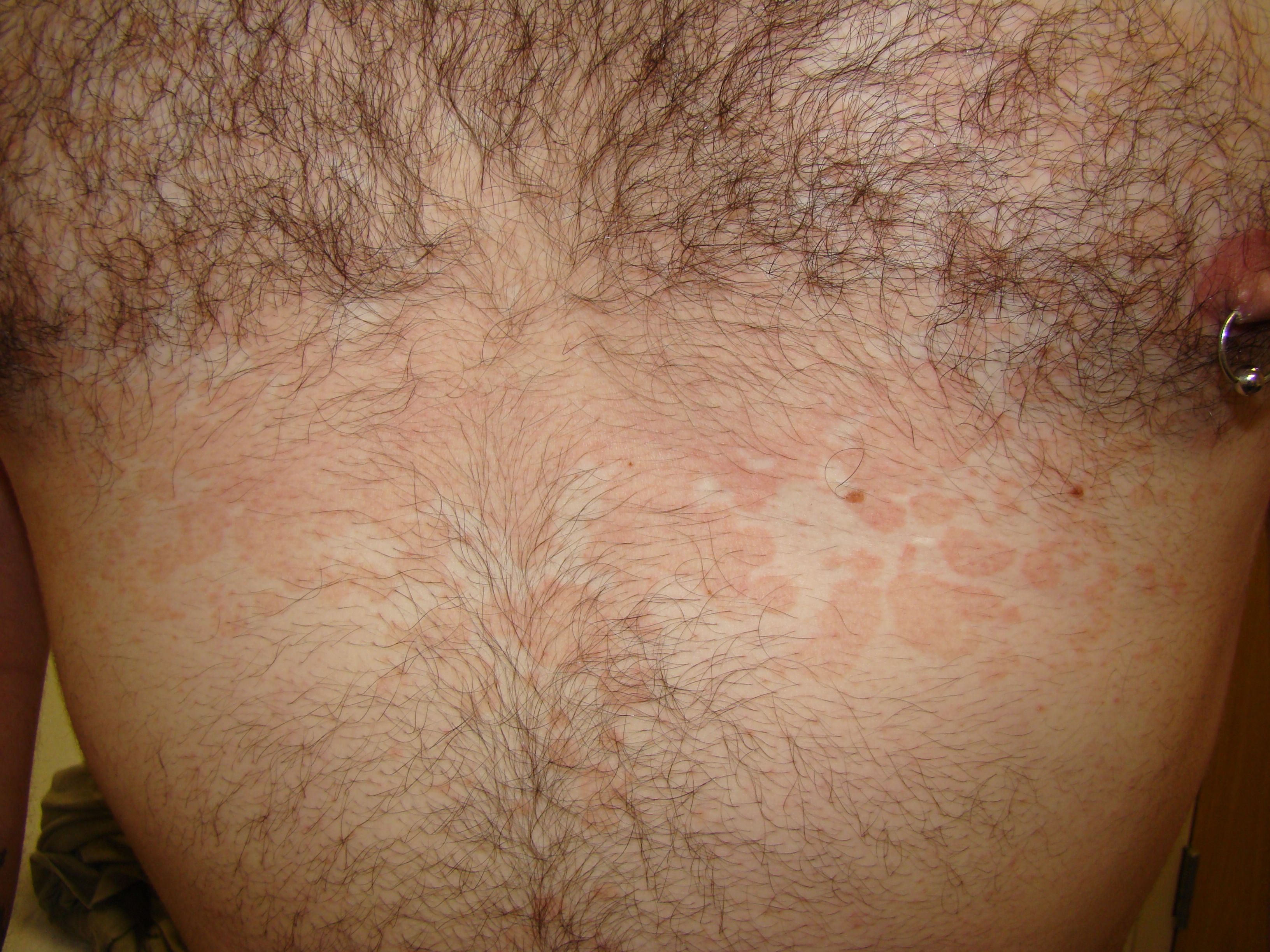Young Man with a Rash on His Chest
This 29-year-old man came in for a wellness evaluation but notes having had this rash for 8 years. Occasionally it itches, but otherwise is asymptomatic and he has had no treatment for it to date. He does not take any medications and has no significant past medical history.
This 29-year-old man came in for a wellness evaluation but notes having had this rash for 8 years. Occasionally it itches, but otherwise is asymptomatic and he has had no treatment for it to date. He does not take any medications and has no significant past medical history.
What is your diagnosis?
- Tinea corporis
- Granuloma annulare
- Pityriasis rosea
- Inverse psoriasis
- Tinea versicolor
Diagnosis
This erythematous rash with slight scale on the trunk of long duration with relatively few symptoms is classic for tinea versicolor also known as Pityriasis versicolor. The causative fungus is Malassezia furfur, which is lipophilic and feeds off sebum present after puberty.
As a result, this condition is most commonly seen in adolescents and young adults typically on the trunk. Diagnosis is confirmed with microscopy showing multiple buds and relatively short hyphae giving the "spaghetti and meatballs" pattern. It is treated with selenium sulfide or pyrithione zinc topically. If resistant, itraconazole or fluconazole may be used.

Tinea corporis can also present on the trunk as a scaly erythematous expanding rash but typically is more focal and in a nummular or annular pattern. Microscopy shows branching yeast.
Granuloma annulare most commonly starts as a cluster of papules that coalesce into a ring-like lesion with a central depression similar to the annulus of a heart valve. There is no scale and the margin is typically much thicker. It most commonly appears as a single lesion but can be diffuse with multiple lesions.
Pityriasis rosea presents as a diffuse scaly erythematous eruption 7 to 14 days following an initial single scaly erythematous plaque. It can be intensely itchy and usually aligns along the Langer’s lines of the skin, causing a fir tree pattern on the back or horizontal pattern on the abdomen. In contrast to this patient's 8-year course, pityriasis rosea resolves spontaneously in weeks to a few months.
Inverse psoriasis has less scale than plaque psoriasis but usually presents in the axilla, inguinal regions and other areas where the skin folds on itself in contrast to this patient's rash across his chest.
About the Author
Daniel Stulberg, MD, is a Professor of Family and Community Medicine at the University of New Mexico. After completing his training at the University of Michigan, he worked in private practice in rural Arizona before moving into full-time teaching. Stulberg has published multiple articles and presented at many national conferences regarding skin care and treatment. He continues to practice the full spectrum of family medicine with an emphasis on dermatology and procedures.
management of granuloma annulare: an update. Am J Clin Dermatol. 2013
Aug;14(4):279-90.
